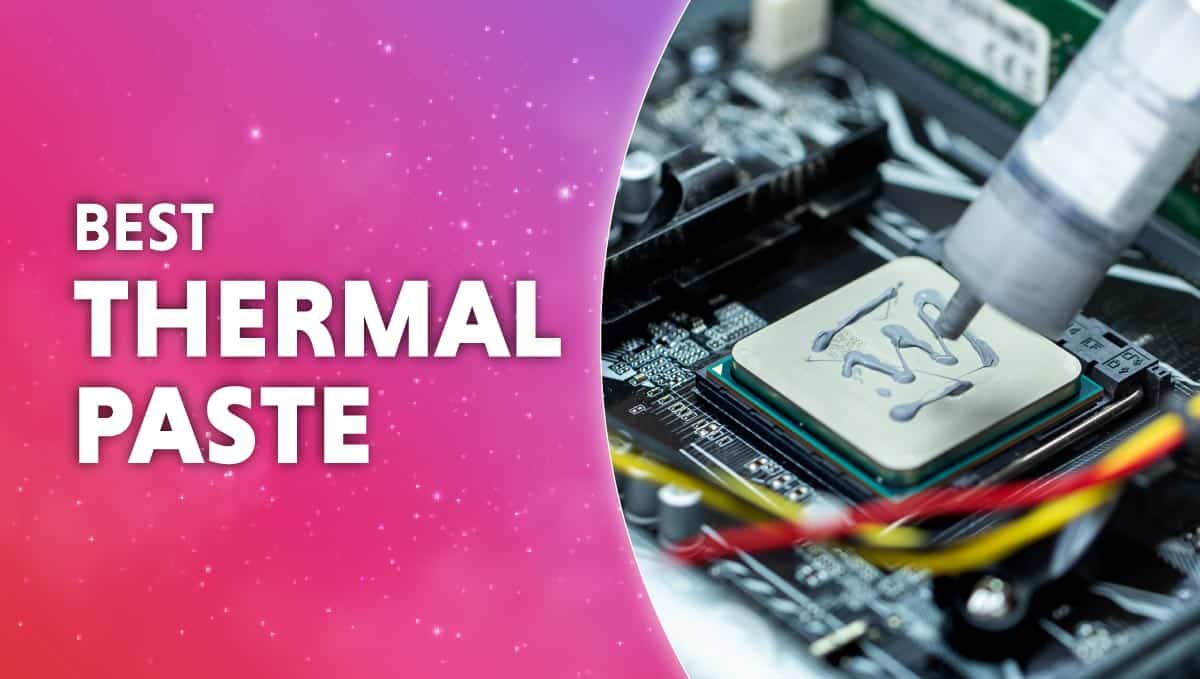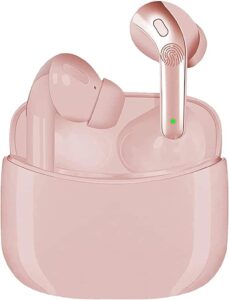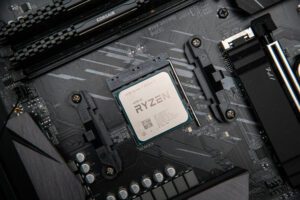To clean thermal paste off a cpu, use isopropyl alcohol and a lint-free cloth. Begin by unplugging the computer and removing the cpu from the motherboard.
Cleaning thermal paste off a cpu is crucial to ensure maximum system performance and stability. Over time, thermal paste can dry out and lose its effectiveness, causing high temperatures and potential damage to the cpu. It’s important to use isopropyl alcohol, as it evaporates quickly and doesn’t leave residue.
A lint-free cloth should be used to prevent any fibers from getting stuck on the cpu. Furthermore, always make sure the computer is unplugged and the cpu is removed from the motherboard before attempting to clean it. By following these simple steps, you can easily clean thermal paste off a cpu and keep your computer running smoothly.


Credit: www.wepc.com
Understanding Thermal Paste Buildup
Thermal paste buildup is a common issue that cpu users encounter. When thermal paste accumulates on your cpu over time, it can impact your computer’s ability to function correctly and possibly cause damage to the internal hardware components. To prevent these issues, periodic cleaning of the cpu is essential.
In this post, we will discuss the significance of regularly cleaning your cpu, the signs of thermal paste buildup, and how this buildup can affect your computer’s performance.
What Is Thermal Paste Buildup, And How Does It Affect Your Cpu?
Thermal paste is a compound that serves as a conduit between your cpu’s heat sink and its fan. Its primary purpose is to conduct heat away from the cpu quickly, preventing any overheating, which can damage your hardware. Over time, the thermal paste undergoes a process called “curing,” meaning it dries out and becomes less effective in transferring heat.
As a result, thermal paste buildup occurs, where the thermal paste hardens and clumps together, potentially decreasing its efficiency in managing the cpu’s temperatures, leading to overheating and performance issues.
Signs Of Thermal Paste Buildup In Your Computer
It is essential to recognize the signs of thermal paste buildup to prevent any potential hardware issues from arising. Some of the most common indicators of thermal paste buildup are:
- Overheating of your cpu
- Your computer randomly shutting down
- Sudden drops in performance speed
- The presence of dust and grime in the cpu fan and heat sink
- Your computer’s temperatures remain high despite the fans running on full speed.
If you notice any of these signs, it is highly recommended that you clean your cpu and replace the thermal paste to ensure proper functioning and performance.
Importance Of Regular Cleaning
Performing routine cleaning of your cpu can prevent thermal paste buildup and extend the life of your computer’s hardware. Regular cleaning will help you avoid potential issues such as reduced performance, overheating, and internal hardware damage. Plus, a clean computer will ensure that the cpu fan and heatsinks are working efficiently in managing temperatures.
Understanding the importance of thermal paste buildup and how it affects your computer’s performance is crucial in maintaining your cpu’s longevity. Being mindful of the signs of thermal paste buildup can help you address any issues and ensure that you are taking the proper steps to protect your hardware.
Remember to take good care of your cpu and keep it clean to keep your computer running smoothly and efficiently for years to come.
Reasons For Cleaning Thermal Paste Off Cpu
Thermal paste is a component that you will find on top of your cpu, it plays a crucial role in ensuring that your cpu stays cool and doesn’t overheat. Over time, however, it can accumulate grime, and as a result, you will need to clean it off.
This blog post will teach you how to clean thermal paste off cpu. Specifically, we will focus on the reasons for removing the thermal paste.
Reduced Cpu Performance Due To Thermal Paste Buildup
Thermal paste frequently accumulates grime with time, which can ultimately lead to significant consequences on the processor’s function. Performance issues due to thermal paste buildup can be frustrating to deal with, and that’s why it is necessary to clean the thermal paste periodically.
Here are some of the reasons why thermal paste buildup can lead to reduced cpu performance:
- Thermal paste accumulation can affect your cpu’s heat dissipation, which can make it hard for your system to balance its temperature — reducing performance.
- Heat buildup can cause your system to keep downclocking to lessen the temperature- which hurts the overall performance of your computer.
Overheating Due To Clogged Airways Or Thermal Paste Buildup
A common reason why you’ll need to clean your thermal paste is to avoid your cpu from overheating. When temperatures inside your cpu rise, it can cause the computer to slow down or potentially stop working altogether. Here are some of the reasons why thermal paste buildup can cause your system to overheat:
- Clogged airways can cause heat to build up inside the cpu: This can be a result of debris or dust coming out of the system. This can lead to intense heat and ultimately cause the system to shut down.
- The thermal paste itself can also contribute to your system overheating. If the paste is not applied correctly or has not been cleaned for an extended period of time, it can start to dry up and cause issues if not taken care of.
Shortened Lifespan Of Cpu
Cleaning thermal paste off the cpu is with the purpose of extending the lifespan of the processor, as dirt buildup can lead to system failures and hamper the unit’s lifespan. Thermal paste buildup can also lead to other heat issues that can further result in damage to the cpu.
Here’s how:
- The cpu can develop severe heat issues that are uncontrollable with thermal paste buildup. This can make the system stop working.
- Overheated cpus often experience decreased performance, leading to a reduction in the life span of the cpu. Hence, if you want your cpu to last long, cleaning your thermal paste is a must.
Cleaning your thermal paste is a vital part of keeping your computer and cpu functioning correctly. The tips shared should help you understand why cleaning your thermal paste is critical. By taking this task seriously, you’ll prevent heat buildup, reduce downtime, and ensure that your computer remains in optimal condition for longer.
Tools Required For Cleaning Thermal Paste Off Cpu
The Necessary Tools Needed To Clean Thermal Paste Off A Cpu
Cleaning thermal paste off a cpu can be a daunting task, and you need the right tools to ensure that you do it effectively. Here are the essential tools you need to carry out the task successfully:
- Isopropyl alcohol: A high-concentration ipa (90% or higher) helps dissolve the thermal paste and remove it from the cpu.
- Microfiber cloth: Use a clean, lint-free, and soft microfiber cloth to wipe off the thermal paste from the cpu.
- Soft-bristled brush: A small and soft-bristled brush (like a toothbrush) helps clean hard-to-reach areas of the cpu and ensure that there are no residues left.
List Of Alternative Tools That Can Be Used
Don’t worry if you don’t have the essential tools listed above; there are a few other ways to clean thermal paste from the cpu. Below are some alternatives:
- Paper towels: You can use a paper towel or any other soft and absorbent paper to wipe off the thermal paste.
- Coffee filter: A coffee filter is another option that serves similar purposes to a microfiber cloth.
- Q-tips: You can use cotton swabs or q-tips to clean the thermal paste in small areas.
However, while these alternatives might be cheaper and easier to acquire, they might not be as effective as the essential tools, and you might not get the best results.
Pre-Cautions And Safety Measures Before Starting The Cleaning Process
Safety is crucial before embarking on cleaning thermal paste from the cpu. Therefore, it is essential to take the following precautions:
- Shut down and unplug your computer to prevent electric shock.
- Allow the cpu to cool down before starting the cleaning process to prevent burns.
- Wear an anti-static wristband while working to prevent any static electricity that might damage the cpu.
- Work in a well-lit and ventilated area to avoid inhaling fumes from the ipa.
- Finally, handle the cpu with care to avoid bending any pins or damaging it.
Cleaning thermal paste off a cpu requires the right tools, precautions, and safety measures. By following these guidelines, you can successfully clean off the thermal paste from your cpu without causing any damage.
How To Clean Thermal Paste Off Cpu
Cleaning thermal paste off a cpu can be a daunting task. However, doing so is crucial to ensure that your system keeps running smoothly and doesn’t overheat. We will take you through the step-by-step process of cleaning thermal paste from your cpu, along with the best practices and things to avoid.
Step-By-Step Process Of Cleaning Thermal Paste From Your Cpu
- Step 1: Turn off your computer and unplug the power cable to prevent any damage to the system.
- Step 2: Remove the cpu fan by taking out the screws or clips that hold it in place.
- Step 3: Gently remove the cpu by lifting it straight up from the socket. Do not force the cpu out.
- Step 4: Clean the old thermal paste from the top of the cpu using a lint-free cloth or paper towel. Be gentle to avoid damage to the cpu.
- Step 5: Clean the old thermal paste from the bottom of the cpu fan using the same cloth or paper towel.
- Step 6: Apply a small amount of new thermal paste to the center of the cpu. Do not apply too much, as this can cause overheating.
- Step 7: Reattach the cpu fan using the screws or clips, ensuring that it is securely in place.
- Step 8: Plug the power cable back in and turn the computer on to check that everything is working correctly.
Best Practices For Cleaning Thermal Paste
- Use a lint-free cloth or paper towel when cleaning the cpu and cpu fan to avoid leaving any fibers behind.
- Use an appropriate amount of thermal paste to ensure that the cpu is adequately cooled but not overheated.
- Make sure that the cpu is clean and dry before applying new thermal paste to prevent air bubbles and uneven cooling.
- Regularly clean the cpu and cpu fan to prevent the build-up of dust and debris.
What To Avoid While Cleaning Thermal Paste On Cpu
- Do not apply too much or too little thermal paste, as this can cause the cpu to overheat.
- Do not use a metal object to clean the cpu or cpu fan, as this can cause damage to the delicate components.
- Do not touch the bottom of the cpu, as this can leave oils and dirt on the surface and interfere with the thermal conductivity.
- Do not use liquid cleaning products such as alcohol or acetone to clean the cpu or cpu fan, as this can corrode the surfaces and leave a residue.
Cleaning thermal paste from a cpu can seem like a daunting task, but it is a necessary one to keep your system running smoothly. By following the above guidelines, you can ensure that the process is done safely and effectively, without causing any damage to your components.
Frequently Asked Questions Of How To Clean Thermal Paste Of Cpu
How Often Do I Need To Clean Thermal Paste From My Cpu?
It is recommended to clean and replace thermal paste every 2-3 years, depending on usage.
Can I Clean Thermal Paste Without Removing The Cpu?
It is best to remove the cpu and clean the thermal paste thoroughly before applying a new layer.
What Is The Best Way To Clean Thermal Paste From A Cpu?
Use isopropyl alcohol, a lint-free cloth, and a plastic scraper to carefully remove the paste, then wipe the surface clean.
Conclusion
By following the step-by-step guide on how to clean thermal paste off a cpu, you can greatly increase the lifespan of your device. The process is simple and inexpensive, but requires careful attention to detail. Remember to gather all necessary materials before starting, and be patient when removing the thermal paste.
While it may take some effort, the end result will be worth it as your cpu will be running more efficiently and with less risk of overheating. By keeping your cpu cool, you can also improve overall system performance and avoid costly repairs down the line.
So, take the time to properly clean the thermal paste off your cpu and enjoy the benefits of a healthier, longer-lasting machine.



